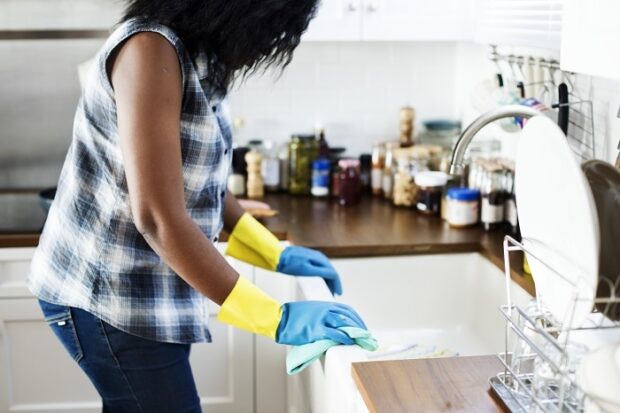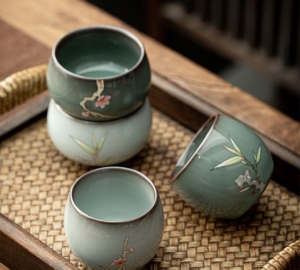We’ve all been there, haven’t we?
You walk into your kitchen to do your dishes or drain your pasta, only to discover that the sink has decided to go on break and won’t be draining until God knows when.
Right there on that spot, you stare and stare at the sink, wondering what you can do to get it working again.
After several wasted minutes of thinking about what to do, you decide to call in a plumber to come and check it out.
More often than not, a plumber – like the one at blocked drains Castle Hill – will have a fix to your drain problem. But before you go ahead to spend that money, don’t you want to try and see if you could fix things yourself?
Here are a few DIY tips to fix a blocked kitchen sink.

Causes of kitchen sink blockage (Usual suspects)
- Grease, fats, and oils
- Paper products, such as paper towels or food wrappers
- Meat
- Eggshells
- Coffee grounds
- Fruit peels, pits, and stickers
- Starchy foods, such as pasta, rice, or bread
- Gum
Try hot boiling water
The first and simplest tip is to attack the sink with boiling water.
Why boiling water? You may wonder!
The reason is that in most blocked kitchen sink cases, hair, grease, soap residue, and other debris are usually the first suspects. And the best way to deal with them is to heat them up.
How to do it
- Heat up about half a gallon of water and empty it into the sink drain gradually.
- Turn on the faucet this time to see if the drain has returned to normal, or it’s still draining slowly. If the latter, repeat step one above.
- If, after two attempts with boiling water, there’s still no luck, try the next tip below.
Check the garbage disposal
The next suspect is your garbage disposal.
Often times, when a garbage disposal is clogged, it could cause the sink drain not to function properly. So, what you need to do is break the clog at the disposal. And you can do that by simply turning on the disposal.
Don’t be surprised if your garbage disposal refuses to turn on after a couple of attempts. Overheating may be the cause of that. But you can activate the reset switch at the side or bottom of the unit for an easy reboot. After resetting the disposal, try turning it on again to clear the clog.
Bring in a household plunger
If the first two methods failed, then it’s time to get a bit more mechanical with your sink.
And a good tool for the job is your regular household plunger (the toilet plunger can do the job, but the best is a flat bottomed drain plunger).
To plunge the clog out of your sink drain, follow these simple steps:
- Fill the sink with hot water until it’s about halfway full and creates a seal around the drain.
- Position the plunger over the drain and begin pumping up and down quickly several times.
- Remove the plunger and wait to see if the water drains.
- Repeat the process until the water drains freely.
Apply salt and boiling water
So ordinary and mechanical approaches have failed, right?
Let’s try to break the clog down with chemicals.
The first chemical approach is the application of salt solution.
And here’s how to do that.
- Empty the sink of any standing water
- Pour about ½ cup of table salt down the drain
- Let the salt sit in for about 10 minutes
- Now gradually pour in boiling water to flush the salt down the drain.
Vinegar and baking soda
The approach here is quite similar to that of the table salt described above. The only difference here is that we’re pouring ½ a cup of baking soda into the drain, followed by an equal amount of white or apple cider vinegar. The solution will bubble, but when they subside, put the stopper in and wait about 15 minutes. Next, run hot water to see if the clog clears.
Baking soda and salt
This is another combination that can work on sink clogs. Mix about a cup of baking soda with a half-cup of salt, and pour down the drain. Let the mixture sit for several hours, then flush with boiling water. You can repeat this process if it doesn’t work the first time.
P-trap
Another idea is to clear the P-trap beneath the sink.
Usually, when this part of the system is blocked, it can hinder the smooth passage of water.
Not sure what P-trap is?
Well, P-trap is that part of your sink system that’s located at the curve of the drainpipe under the sink, usually inside a cabinet.
To clear the P-trap, simply unfasten it from the drainpipe to clear out any debris that may be stuck in it. Do not forget to place a bucket directly under the P-trap when unfastening it so that you can catch the falling debris and water.
Plumber’s snake
When all’s failed, you can try using a plumber’s snake or auger as it’s otherwise known.
But before you can apply this tool, you will need to first unfasten the P-trap and then disassemble the drainpipe that runs underneath the kitchen sink to expose the “stub pipe” that travels behind the cabinet wall. This is where you insert the snake into the pipe to plunge out any clog.



